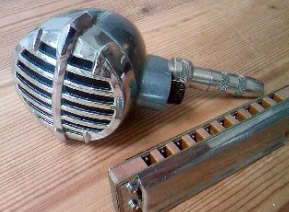What Does ‘Cupped Harp’ Mean?
‘Work your hands from day to day, The winds will blow the profit.’ Louis MacNiece
It all boils down to what you do with your hands. When playing acoustically, there are two principal hand positions – open and closed. Harp players also call the closed position ‘cupped’. The term ‘cupped’ probably derives from the way we would naturally use our hands to scoop and hold drinking water.
When playing amplified harmonica there are three further scenarios that need consideration; the way we use our hands changes in each case. The first scenario is playing semi-acoustically through a vocal microphone (mic). The second is playing with an open hand position through a hand held mic. The third is playing with cupped hands through a hand held mic. (The hand held mic can be either the vocal mic or a separate harp mic). Let’s look at all the options in greater depth. (more…)






